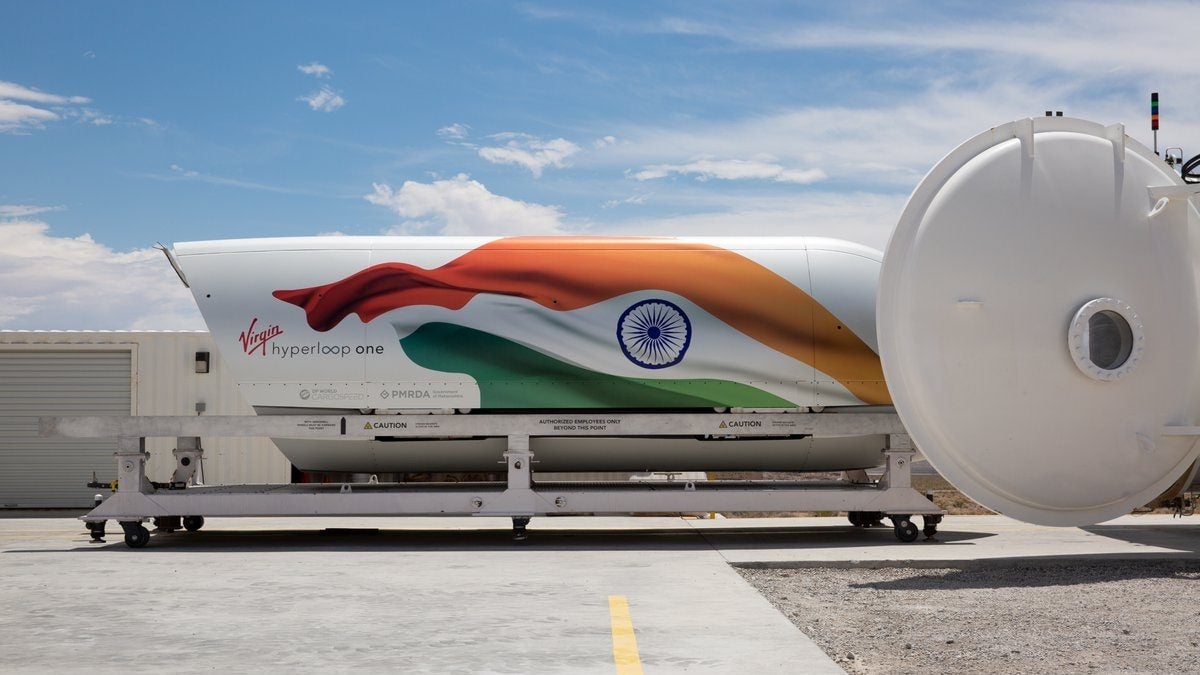India’s hyperloop plans were all talk—until now
India is officially getting serious about the hyperloop.


India is officially getting serious about the hyperloop.
Yesterday (July 31), the Maharashtra government gave the final nod for constructing a hyperloop between India’s financial capital Mumbai and Pune, which is 200 kilometres away. The authorities have tagged it a “public infrastructure” project much like roads, bridges, and railways, setting it up to be the first hyperloop project in the world, the makers claim.
A hyperloop is an ultra-high-speed ground transportation system akin to bullet trains. The Mumbai-Pune hyperloop is expected to slash the 3.5 hour travel time between the two cities to 35 minutes, according to the press release.
“This is history in the making. The race is on to host the first hyperloop transportation system in the world, and today’s announcement puts India firmly in the lead,” said Jay Walder, CEO of the American transport tech firm Virgin Hyperloop One, which will be constructing the route between Mumbai and Pune. “This is a significant milestone and the first of many important steps toward bringing hyperloop to the masses.”
Already, there are around 75 million passenger journeys between Mumbai and Pune annually. By 2026, this figure is expected to skyrocket to 130 million. The transport system aims to undertake 150 million passenger-trips annually, along with ferrying lightweight cargo units between Mumbai port and Pune.
Coming soon
The hyperloop, brought into the limelight by Tesla and SpaceX CEO Elon Musk in a 60-page letter five years ago, involves a magnetically-propelled capsule that carries passengers or cargo through a low-pressure tube at over 1,000 kilometres per hour. Virgin Hyperloop One, backed by British investor and founder of the Virgin group, Richard Branson, was the first company to test the technology in May 2016.
The announcement makes way for the formation of a consortium of Virgin Hyperloop One and DP World FZE—a global trade leader and a major ports and logistics operator in India which is set to invest $500 million in private capital to complete the first phase of the project—as proponents of the original project.
Although this isn’t the only hyperloop project in the race—US-based research company Hyperloop Transportation Technology announced plans to connect Vijayawada and Amaravati in the southeastern coastal state of Andhra Pradesh—it’s the only one that’s gone beyond the memorandum stage in India.
India may be the frontrunner but elsewhere, UAE’s hyperloop project is also making strides with its first 10 kilometre stretch set to open by 2020; the US is working on a number of routes; and projects are underway in China, parts of Europe and a handful of other regions too.
Pros and cons
The hyperloop system will be a real energy- and time-saver. A US department of transportation (DoT) feasibility analysis estimates that Hyperloop routes could be up to six times more energy-efficient than air travel on short routes, and over three times faster than the world’s fastest high-speed rail system.
Though experts have questioned how sustainable Musk’s claim of zero direct emissions really is, the high-pods would be more eco-friendly than road vehicles, reducing air and noise pollution, greenhouse gas emissions, congestion, and even road accidents, research shows.
Aside from alleviating transportation woes, the hyperloop will also be a boon for the economy. The project will “generate hundreds of thousands of new high-tech jobs, create over $36 billion in wider socio-economic benefits, and create new hyperloop component and manufacturing opportunities to export to India and the rest of the world,” the July 31 press release added.
However, hyperloop’s success in India heavily depends on the regulatory framework. Land acquisition troubles, wonky safety standards, and a tough customs regime often plague infrastructure projects in the nation. To top it off, it is still a theoretical transportation system with only a handful of small-scale, lower-speed tests, which have never been tested with human passengers.